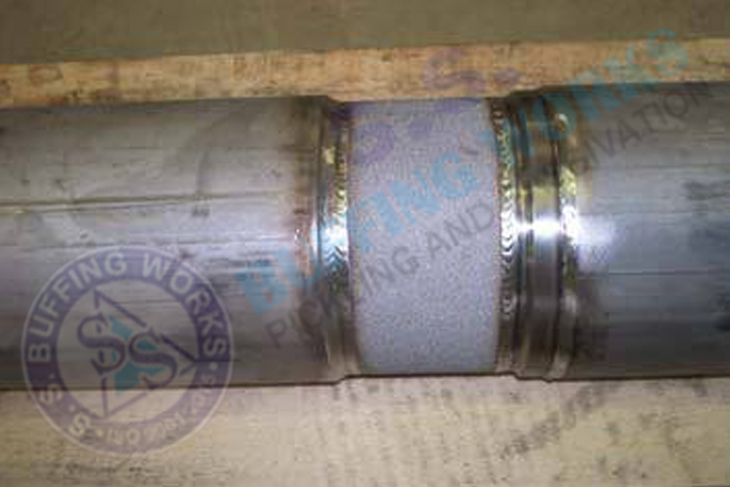When stainless steel is welded, a scale is formed and on either side of the weld is a heat affected zone that varies in colour from straw to blue-black, depending on welding conditions. This area is rich in metal oxides that possess very little corrosion resistance and will readily allow corrosion to commence. This effect extends beyond the areas affected by colour change.This is a very reactive area that will readily rust in a very short time. Because this is little understood, it is common to find badly corroded areas where stainless steel is found on site. This is most unfortunate since the method of avoiding such corrosion is simple and relatively inexpensive. Descaling, pickling and passivating are separate processes that are often confused.
“All mechanical methods (including blasting techniques) are possible causes of contamination by embedding foreign particles into the surface of the stainless steel; this may lead to reduced corrosion properties.”
The heat tint produced by welding is not only unsightly but the thicker oxide layer includes chromium from the surface of the metal, lowering its corrosion resistance. Pickling both removes the oxide layer causing the colour tints and a thin layer of the underlying metal to restore the original properties. Stainless Steel owes its corrosion resistance to the formation of a chromium oxide surface layer and is then referred to as being passive. This occurs naturally and spontaneously provided sufficient oxygen is available. Even aerated water provides enough oxygen for this process to occur. Material supplied by the producing mills is fully passivated and further passivation is rarely required.
